What are the top things to do in Tokyo?
Explore Tokyo's highlights like Tokyo Tower and Senso-ji Temple, then visit Ueno Zoo, the oldest zoo in Japan. Experience the vibrant neighborhoods of Akihabara and Ginza, and enjoy the views from Tokyo Skytree. Don't miss the Tsukiji Outer Market for culinary delights and the serene Shinjuku Gyoen National Garden for a peaceful retreat.
- Tokyo Tower
- Senso-ji Temple
- Meiji Jingu
- Shibuya Crossing
- Tsukiji Outer Market
- Akihabara
- Ginza
- Odaiba
- Ueno Zoo
- Tokyo Skytree
- Roppongi Hills
- Edo-Tokyo Museum
- Shinjuku Gyoen National Garden
- Harajuku
- Imperial Palace East Gardens
- TeamLab Planets
- Ameya-Yokocho Market
- Nakameguro
- Hamarikyu Gardens
Our recommended 19 things to do in Tokyo
Tokyo blends tradition and modernity with iconic landmarks like Tokyo Tower and Senso-ji Temple, vibrant neighborhoods such as Akihabara and Harajuku, serene parks, bustling markets, and cutting-edge museums like TeamLab Planets. Whether you're exploring the historic Edo-Tokyo Museum, crossing Shibuya's famous scramble, or enjoying views from Tokyo Skytree, the city offers endless discoveries.
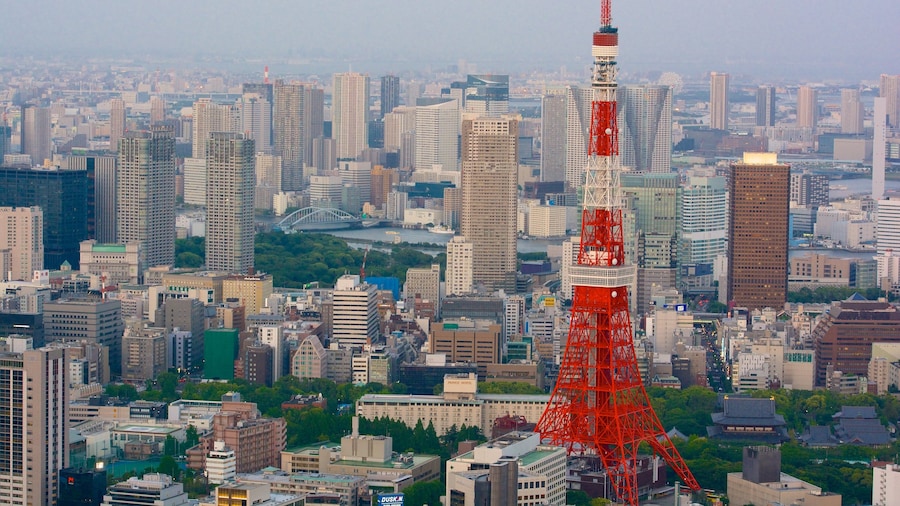
Tokyo Tower
Iconic Red-and-White Tower with City Views
1 of 19
Why go?
Tokyo’s Eiffel-inspired tower offers panoramic city views and a unique cultural experience. Its observation decks and light displays make it a must-see landmark.
Standing at 333 meters, this striking red-and-white tower is a symbol of Tokyo’s modern skyline. The main observation deck provides sweeping views of the city, while the top deck offers an even more elevated perspective. At night, the tower dazzles with seasonal light displays, creating a magical atmosphere. Inside, you’ll find shops, cafes, and even a small museum. It’s a great spot for photography, especially during sunset. Advance reservations for the top deck are recommended to avoid long waits.
Cost
Adult ticket: from ¥1200
Time needed
60–90 min
When to go
Sunset
Nearby transit
Akabanebashi Station
Insider tip
Visit during sunset for stunning views and fewer crowds; book top deck tickets online in advance.
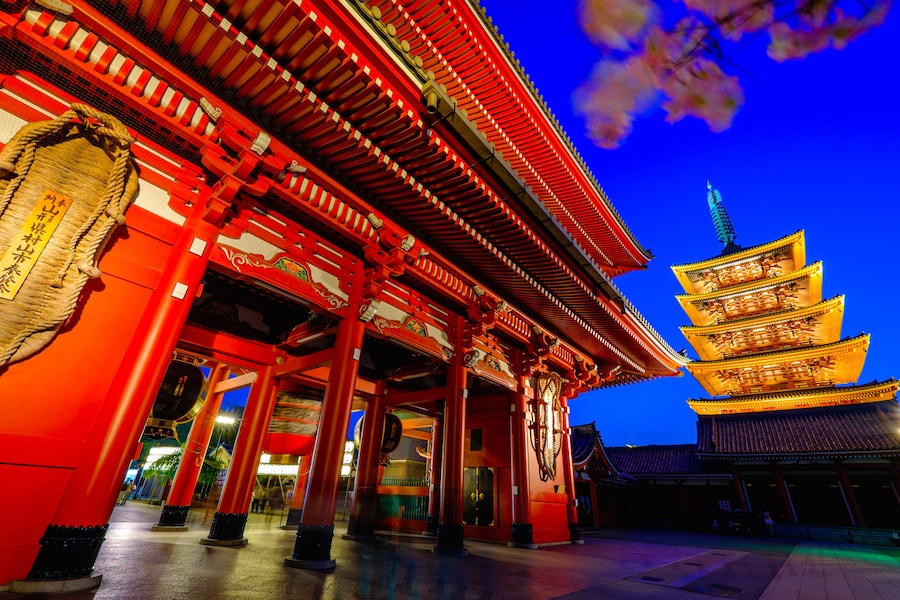
Senso-ji Temple
Tokyo's Oldest Buddhist Temple
2 of 19
Why go?
Historic temple with a vibrant atmosphere, iconic red gate, and bustling Nakamise Street. Perfect for soaking in Tokyo's spiritual and cultural heritage.
Senso-ji Temple, located in Asakusa, is Tokyo's oldest and most famous Buddhist temple. The grand Kaminarimon Gate, with its massive red lantern, welcomes you to a lively approach lined with traditional shops on Nakamise Street. Inside, the temple's main hall and five-story pagoda offer a serene contrast to the bustling surroundings. Visitors often draw omikuji (fortune slips) or enjoy the incense smoke, believed to bring blessings. The temple grounds are especially atmospheric during festivals like Sanja Matsuri. It's a place where history, spirituality, and local culture converge beautifully.
Cost
Entry: free
Time needed
60–90 min
When to go
Early morning
Nearby transit
Asakusa Station
Insider tip
Visit early morning to avoid crowds and enjoy a peaceful experience.
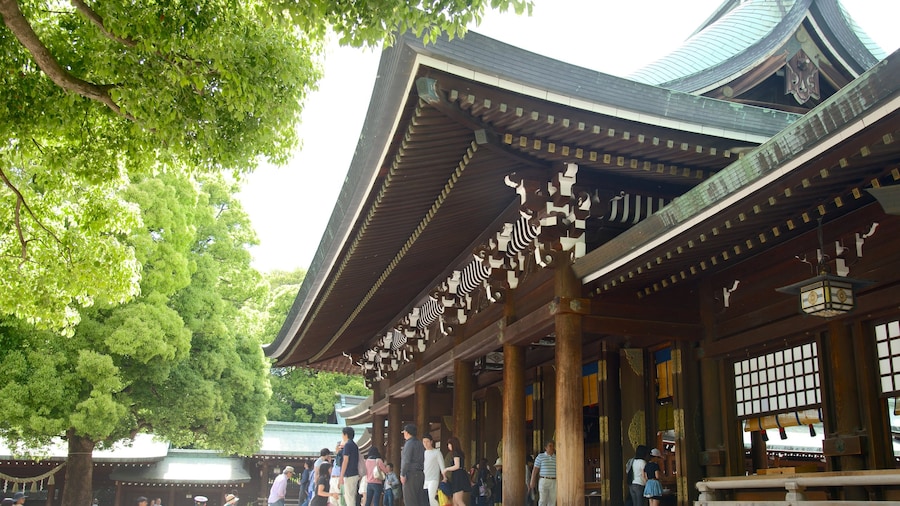
Meiji Jingu
Serene Shinto Shrine in a Forested Oasis
3 of 19
Why go?
A tranquil Shinto shrine surrounded by a lush forest, offering a peaceful escape from Tokyo's urban energy. Perfect for reflection, cultural insight, and a scenic walk through towering torii gates.
This iconic shrine, dedicated to Emperor Meiji and Empress Shoken, is a serene retreat in the heart of Tokyo. Enter through massive wooden torii gates and follow the gravel paths lined with towering trees. The main shrine complex is a beautiful example of traditional Shinto architecture, where you can observe rituals or write wishes on ema plaques. Seasonal highlights include spring irises and autumn foliage. The adjacent Meiji Jingu Inner Garden is worth exploring for its koi pond and tranquil atmosphere. It's a place to connect with Japan's spiritual heritage while enjoying a moment of calm.
Cost
Entry: free
Time needed
60–90 min
When to go
Early morning
Nearby transit
Harajuku Station
Insider tip
Visit early to avoid crowds and experience the shrine's tranquil atmosphere at its best.
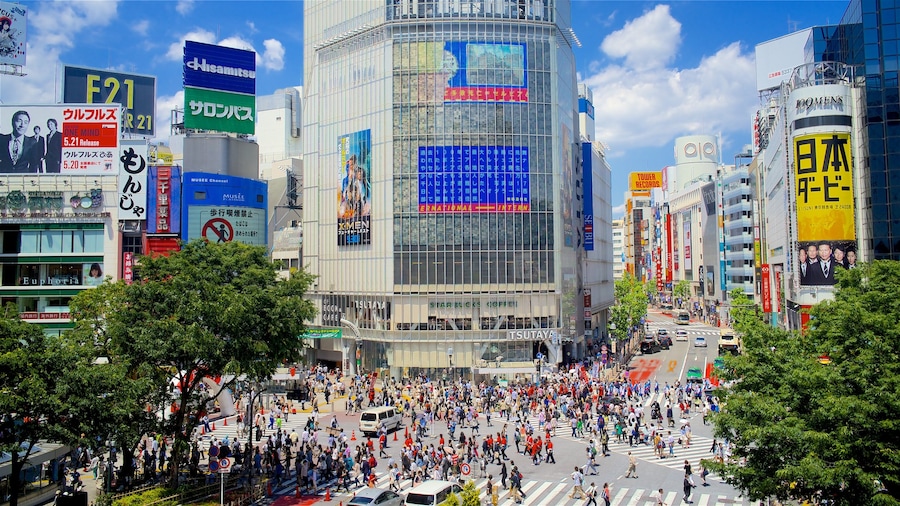
Shibuya Crossing
Iconic Pedestrian Scramble
4 of 19
Why go?
Famous for its mesmerizing pedestrian scramble, this landmark captures Tokyo's energy. Watch hundreds cross in perfect chaos under neon lights and towering screens.
Shibuya Crossing is a quintessential Tokyo experience, where the city's vibrant pulse comes alive. As the lights change, hundreds of people move in unison, creating a dynamic spectacle that feels choreographed. The surrounding area offers shopping, dining, and entertainment, making it a hub for locals and visitors alike. For the best view, head to a nearby café or observation deck. The crossing is especially captivating at night when the neon lights and billboards illuminate the scene. It's a perfect spot for photography or simply soaking in the city's energy. Don't miss the nearby Hachiko Statue, a heartwarming tribute to loyalty.
Cost
Entry: free
Time needed
30–45 min
When to go
Evening
Nearby transit
Shibuya Station
Insider tip
For a bird's-eye view, visit the Shibuya Sky observation deck or grab a window seat at a second-floor café.
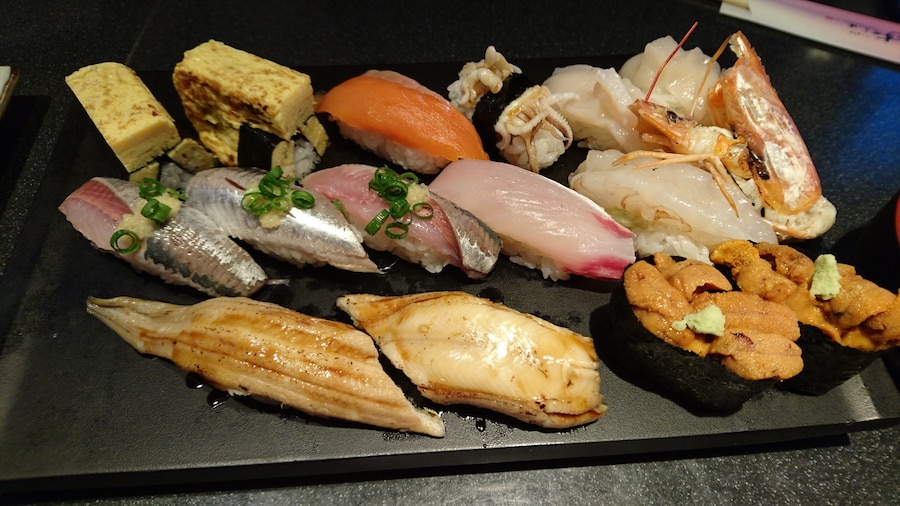
Tsukiji Outer Market
Tokyo's Vibrant Culinary Hub
5 of 19
Why go?
Bustling market with fresh seafood, street food, and kitchenware—perfect for foodies and curious travelers. Experience authentic flavors and the energy of Tokyo's culinary scene.
This iconic market is a paradise for food lovers, offering everything from sushi and sashimi to grilled seafood skewers and tamagoyaki. Vendors also sell Japanese knives, tea, and unique kitchen tools. While the wholesale fish market has moved to Toyosu, the outer market remains a lively destination for sampling local delicacies and shopping. It's a great spot to immerse yourself in Tokyo's food culture and interact with friendly vendors. Arrive early to avoid crowds and enjoy the freshest offerings.
Cost
Entry: free
Time needed
60–90 min
When to go
Weekday mornings
Nearby transit
Tsukiji Station
Insider tip
Bring cash, as many vendors don’t accept cards, and try the grilled scallops for a quick, delicious snack.
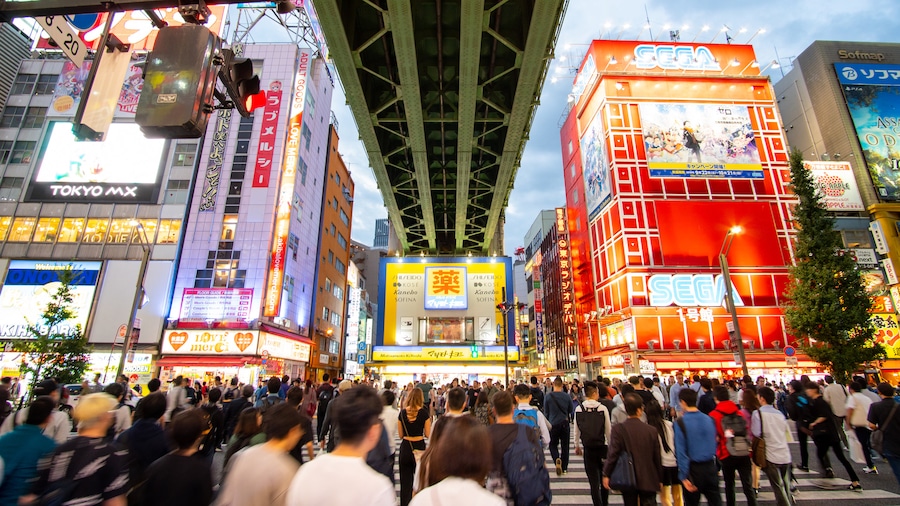
Akihabara
Tokyo’s Tech and Anime Hub
6 of 19
Why go?
A vibrant district for electronics, anime, and gaming enthusiasts—perfect for shopping, themed cafes, and unique finds. Dive into Japan’s pop culture scene with endless entertainment options.
Known as the mecca for tech and otaku culture, Akihabara offers a mix of cutting-edge electronics stores and quirky anime shops. Explore multi-story arcades, manga stores, and themed cafes like maid cafes or retro gaming spots. The area is also home to specialty shops selling rare collectibles and gadgets. For a deeper dive, visit Akihabara Radio Kaikan or Yodobashi Camera for tech marvels. The energy here is palpable, making it a must-see for fans of Japanese pop culture or anyone curious about its vibrant subcultures.
Cost
Entry: free
Time needed
90–120 min
When to go
Weekday afternoons
Nearby transit
Akihabara Station
Insider tip
Bring cash for smaller shops and arcades; many don’t accept cards.
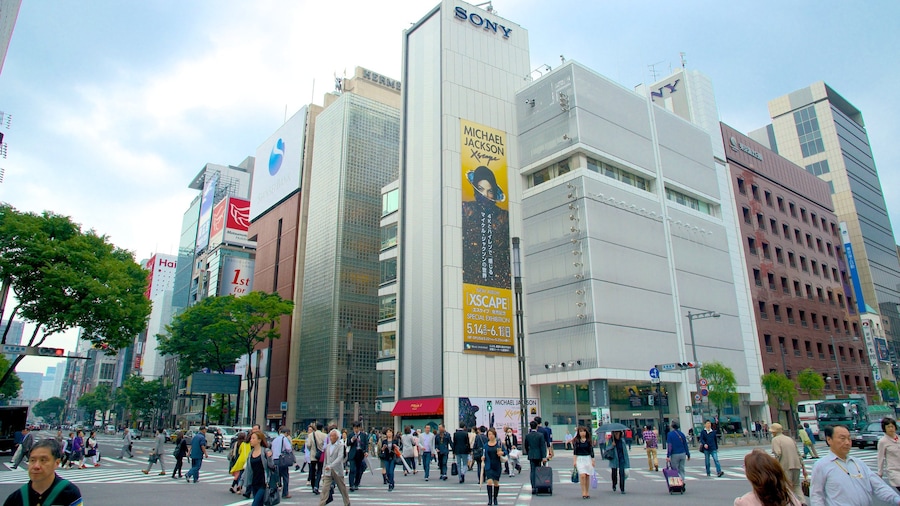
Ginza
Tokyo’s Luxury Shopping and Dining Hub
7 of 19
Why go?
High-end shopping, Michelin-starred dining, and vibrant nightlife converge in this upscale district. Ginza blends modern luxury with traditional charm, offering everything from flagship stores to historic kabuki theaters.
Ginza is Tokyo’s premier destination for luxury shopping and fine dining. Flagship stores from global brands line Chuo-dori, while smaller streets reveal boutique shops and art galleries. Food lovers can explore Michelin-starred restaurants, sushi counters, and hidden izakayas. For a cultural touch, visit the Kabukiza Theatre for a traditional kabuki performance. The area transforms at night with illuminated storefronts and lively bars. Ginza’s mix of modernity and heritage makes it a must-visit for any traveler.
Cost
Entry: free
Time needed
2–3 hours
When to go
Weekend afternoons
Nearby transit
Ginza Station
Insider tip
Visit on weekends when Chuo-dori becomes a pedestrian-only zone, perfect for leisurely exploring.
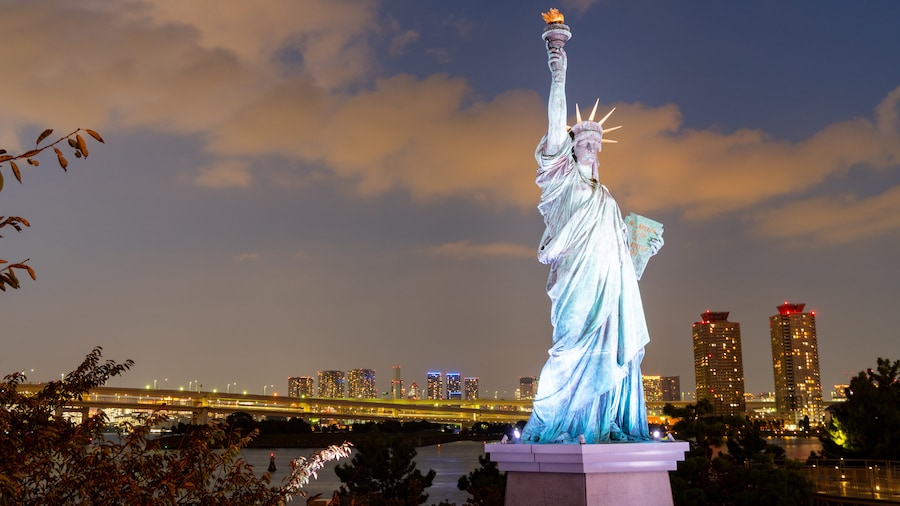
Odaiba
Futuristic Waterfront Escape
8 of 19
Why go?
Man-made island with shopping, entertainment, and stunning bay views—perfect for a mix of relaxation and exploration. Iconic landmarks like Rainbow Bridge and teamLab Borderless await.
This vibrant waterfront neighborhood offers a unique blend of futuristic attractions and serene bay views. Explore Palette Town for shopping and entertainment, or visit the life-sized Gundam statue at DiverCity Tokyo Plaza. Art lovers will enjoy teamLab Borderless, an immersive digital art museum. For a relaxing moment, stroll along the seaside park or take in the panoramic views from the Odaiba Ferris Wheel. Dining options range from casual eateries to upscale restaurants with bay vistas. Families, couples, and solo travelers alike will find plenty to enjoy here.
Cost
Entry: free; attractions vary
Time needed
2–4 hours
When to go
Evening
Nearby transit
Daiba Station
Insider tip
Catch the best views of Rainbow Bridge illuminated at night from Odaiba Marine Park.

Ueno Zoo
Tokyo’s Beloved Urban Wildlife Sanctuary
9 of 19
Why go?
Japan’s oldest zoo with over 3,000 animals, including pandas, tigers, and exotic birds—perfect for families and animal lovers. Its lush grounds offer a peaceful escape in the heart of Ueno Park.
This historic zoo, established in 1882, is a must-visit for its diverse animal exhibits and tranquil setting. You’ll find iconic giant pandas, rare species like the Sumatran tiger, and an impressive aviary. The grounds are thoughtfully designed, blending natural habitats with cultural touches like a traditional pagoda. Located within Ueno Park, it’s easy to pair your visit with nearby museums or a stroll through the park’s gardens. The zoo is family-friendly, with interactive areas for kids and plenty of shaded spots for relaxing. It’s a manageable size, making it ideal for a half-day outing.
Cost
Adult ticket: from ¥600
Time needed
90–120 min
When to go
Weekday mornings
Nearby transit
Ueno Station
Insider tip
Arrive early to see the pandas before crowds gather; their enclosure is a highlight but gets busy quickly.
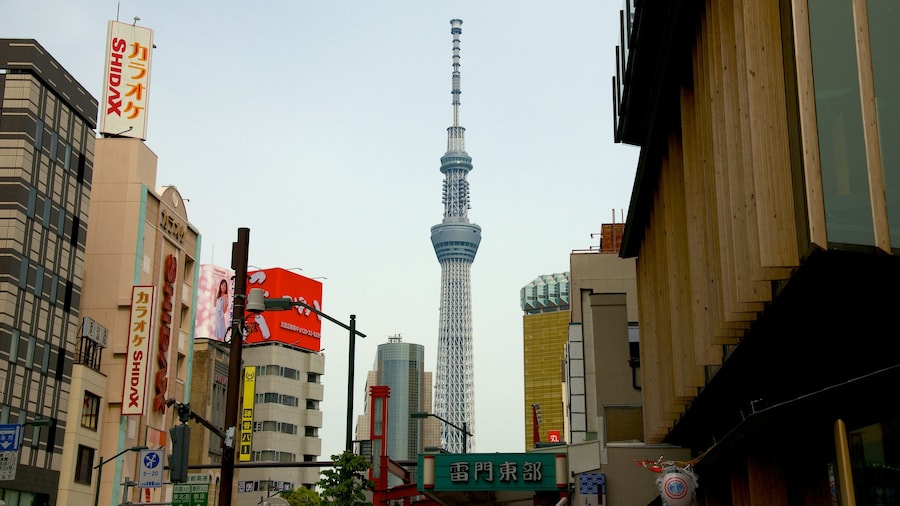
Tokyo Skytree
Panoramic Views of Tokyo
10 of 19
Why go?
Japan’s tallest structure offers sweeping views from two observation decks—perfect for cityscapes and Mount Fuji on clear days. A must for photographers and skyline enthusiasts.
Standing at 634 meters, this iconic tower provides unmatched views of Tokyo and beyond. The Tembo Deck at 350 meters features floor-to-ceiling windows, while the Tembo Galleria at 450 meters offers a thrilling ‘skywalk’ experience. On clear days, you might spot Mount Fuji in the distance. The tower also houses shops, restaurants, and an aquarium, making it a full-day destination. Advance reservations are recommended for peak times, especially weekends.
Cost
Adult ticket: from ¥2,100
Time needed
60–90 min
When to go
Sunset
Nearby transit
Oshiage Station
Insider tip
Visit at sunset for golden-hour photos and stay to see the city lights sparkle after dark.
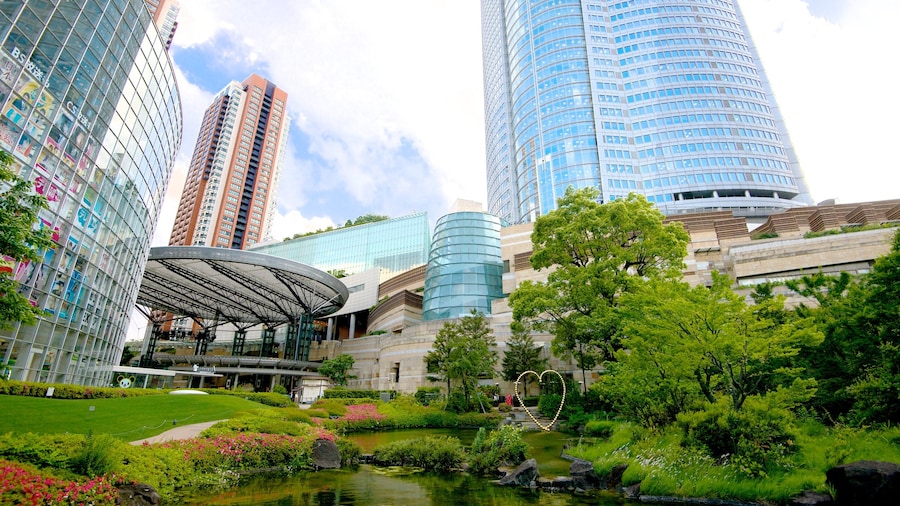
Roppongi Hills
Modern Tokyo’s Cultural Hub
11 of 19
Why go?
Upscale neighborhood blending art, shopping, and dining with panoramic city views. The Mori Tower and rooftop deck are must-visits for Tokyo skyline enthusiasts.
Roppongi Hills offers a curated mix of culture, luxury, and entertainment. The Mori Art Museum showcases contemporary works, while the rooftop deck provides sweeping views of Tokyo, including Tokyo Tower. High-end boutiques and international dining options make it ideal for a day of exploration. The area also hosts seasonal events, from outdoor markets to light displays. Its modern architecture and landscaped gardens create a relaxing yet vibrant atmosphere. Whether you're seeking art, shopping, or city views, this neighborhood delivers.
Cost
Entry: free; Mori Art Museum ticket: from ¥1,800
Time needed
2–3 hours
When to go
Evening for city views
Nearby transit
Roppongi Station
Insider tip
Reserve tickets for the Mori Art Museum and rooftop deck in advance to avoid queues during peak times.
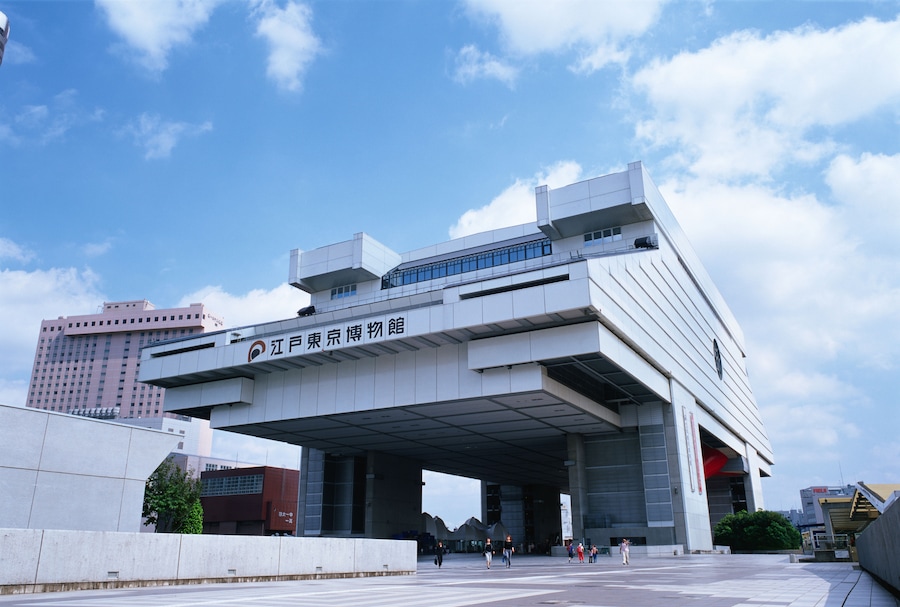
Edo-Tokyo Museum
Explore Tokyo's Rich History
12 of 19
Why go?
Immersive museum showcasing Tokyo's transformation from Edo period to modern times—ideal for history buffs and curious travelers. Life-sized exhibits and interactive displays bring the city's past to life.
Step into Tokyo's fascinating past at this museum, where you’ll find life-sized replicas, dioramas, and artifacts that trace the city’s evolution. Highlights include a full-scale Edo-era bridge and a recreated kabuki theater. English audio guides and signage make it accessible for international visitors. The museum’s unique architectural design adds to the experience, resembling a traditional warehouse elevated on stilts. Perfect for families and solo travelers alike, it offers a deep dive into Tokyo’s cultural and historical roots. Plan ahead to enjoy temporary exhibitions that often feature rare artifacts.
Cost
Adult ticket: from ¥600
Time needed
90–120 min
When to go
Weekday mornings
Nearby transit
Ryogoku Station
Insider tip
Start your visit with the Edo-era bridge replica for a striking introduction to the museum’s immersive exhibits.
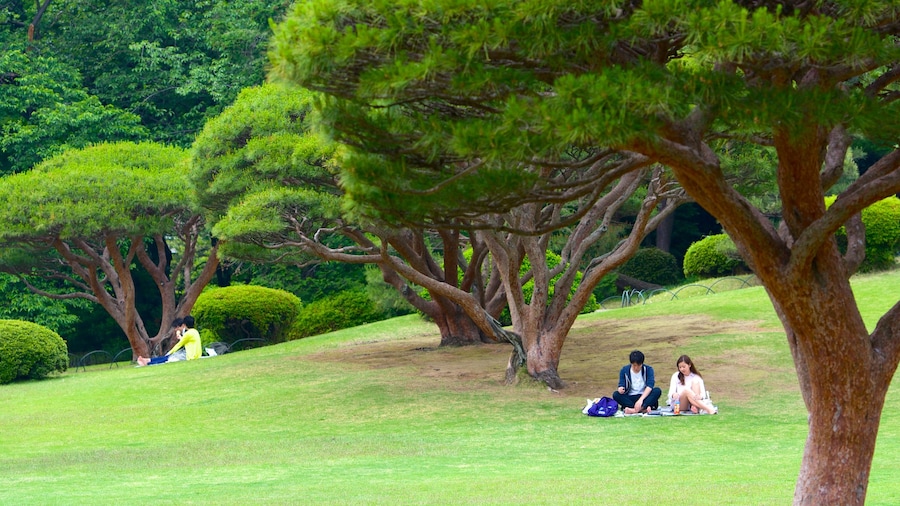
Shinjuku Gyoen National Garden
Tranquil Oasis in Urban Tokyo
13 of 19
Why go?
Expansive garden blending Japanese, English, and French styles—perfect for relaxation or cherry blossom viewing. A peaceful retreat from Shinjuku's bustling streets.
This serene park offers a harmonious mix of landscapes, including traditional Japanese gardens, wide lawns, and a greenhouse with tropical plants. It's a favorite spot for hanami during cherry blossom season, but equally enchanting year-round. The garden's spacious layout makes it ideal for picnics or quiet walks. You'll find plenty of shaded areas and scenic viewpoints, making it a great escape from Tokyo's urban pace. Entry is ticketed, ensuring a well-maintained and uncrowded experience.
Cost
Entry: ticketed
Time needed
60–90 min
When to go
Weekday mornings
Nearby transit
Shinjuku Station
Insider tip
Bring a picnic blanket to enjoy the lawns, but note that alcohol is prohibited inside the garden.
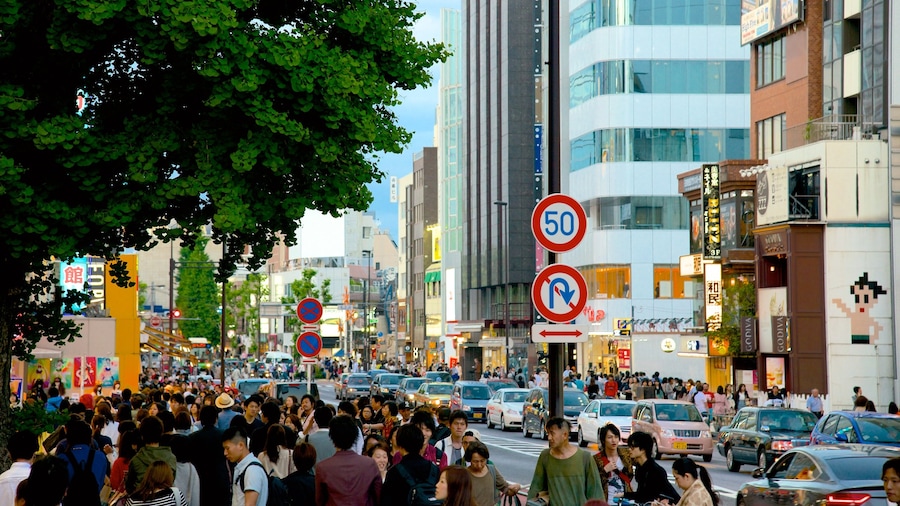
Harajuku
Tokyo’s Youthful Fashion Hub
14 of 19
Why go?
Vibrant streets filled with quirky shops, trendy cafes, and bold fashion statements—Harajuku is Tokyo’s creative pulse. Perfect for exploring Japanese pop culture and unique street style.
Harajuku is synonymous with bold fashion and youthful energy. Start at Takeshita Street, where colorful boutiques and crepe stands line the bustling pedestrian zone. Venture into Omotesando for upscale shopping and architectural gems. Don’t miss the serene Meiji Shrine nearby, offering a peaceful contrast to the lively streets. The area is also a hotspot for themed cafes, from animal encounters to whimsical decor. Whether you’re shopping, people-watching, or soaking in the creative vibe, Harajuku offers a dynamic slice of Tokyo life.
Cost
Entry: free
Time needed
90–120 min
When to go
Weekday mornings
Nearby transit
Harajuku Station
Insider tip
Visit early to avoid crowds on Takeshita Street and secure a spot at popular cafes.
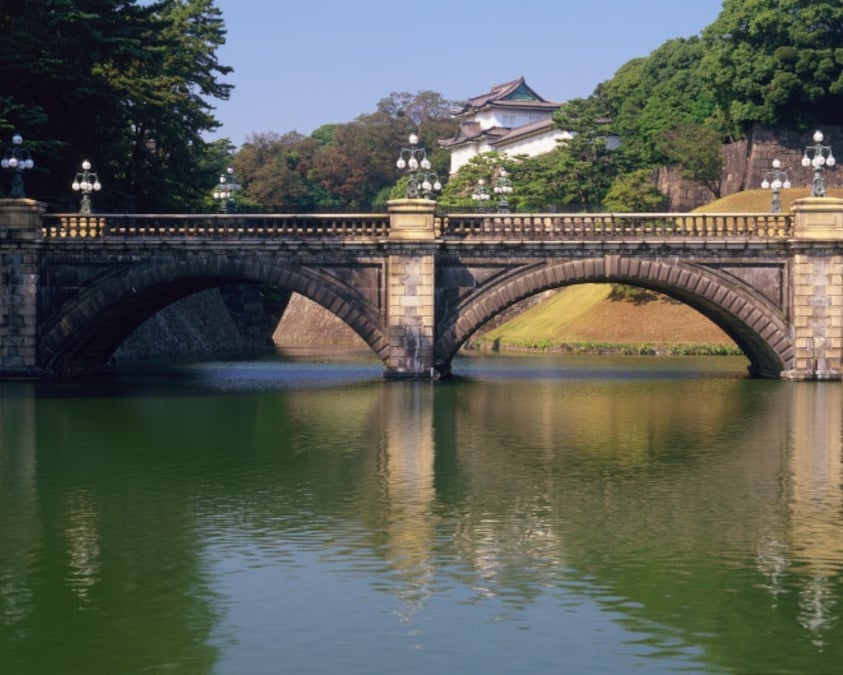
Imperial Palace East Gardens
Tranquil Gardens in Historic Grounds
15 of 19
Why go?
Free, serene gardens within the Imperial Palace grounds, blending Edo-period history with seasonal blooms. A peaceful escape in central Tokyo, ideal for a leisurely walk or quiet reflection.
The Imperial Palace East Gardens offer a rare glimpse into Japan’s imperial history, set amidst beautifully landscaped grounds. Once part of Edo Castle, the gardens feature remnants of the castle walls, moats, and gates. Seasonal flowers, including cherry blossoms in spring and irises in summer, make it a photographer’s delight. The Ninomaru Garden, a traditional Japanese landscape garden, is a highlight. Entry is free, and the gardens are well-maintained, providing a tranquil retreat from the city’s bustle. Note that the gardens are separate from the Imperial Palace itself, which is not open to the public.
Cost
Entry: free
Time needed
60–90 min
When to go
Morning
Nearby transit
Otemachi Station
Insider tip
Arrive early to enjoy the gardens with fewer crowds and better light for photos.

TeamLab Planets
Immersive Digital Art Experience
16 of 19
Why go?
Step into a world of interactive digital art where you become part of the exhibit. This multi-sensory experience blends light, water, and space for unforgettable moments.
TeamLab Planets Tokyo offers a unique, immersive art experience that engages all your senses. Walk barefoot through water-filled rooms, interact with dynamic light displays, and explore spaces that shift with your movements. The installations are designed to make you feel connected to the art and the environment. It's a perfect blend of technology and creativity, appealing to all ages. Advance reservations are recommended as slots fill up quickly. The experience is both relaxing and thought-provoking, making it a highlight of any Tokyo visit.
Cost
Adult ticket: from ¥3200
Time needed
90–120 min
When to go
Weekday mornings
Nearby transit
Shin-Toyosu Station
Insider tip
Wear shorts or pants you can roll up, as some exhibits involve walking through water.
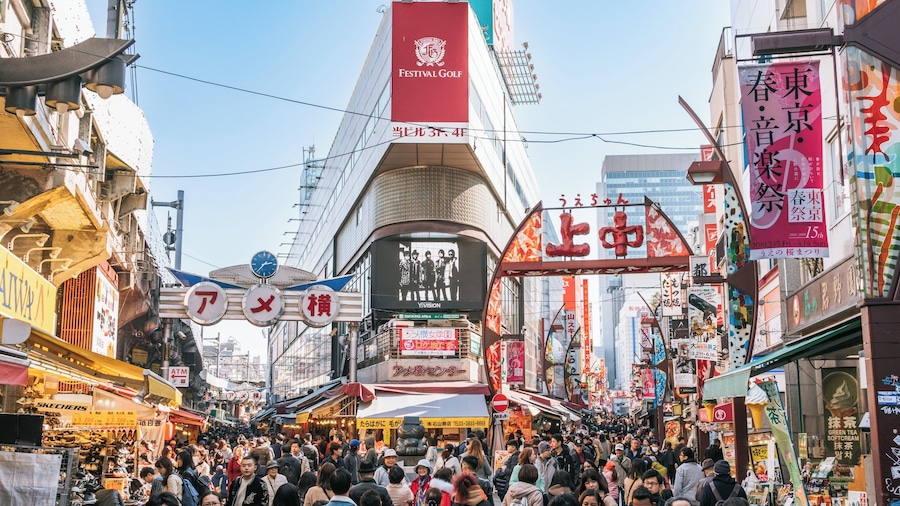
Ameya-Yokocho Market
Bustling Market with Local Flavors
17 of 19
Why go?
Lively open-air market with fresh seafood, street food, and bargain shopping—perfect for immersing yourself in Tokyo’s vibrant energy. A mix of tradition and modernity awaits in every corner.
This iconic market in Ueno offers a sensory overload with its colorful stalls, enticing aromas, and bustling crowds. You’ll find everything from fresh produce and seafood to quirky souvenirs and affordable clothing. Sample local street food like takoyaki or grilled seafood while soaking in the lively atmosphere. The market’s history as a post-war black market adds a fascinating layer to its charm. It’s a great spot to experience Tokyo’s dynamic culture without breaking the bank. Be prepared for crowds, especially on weekends.
Cost
Entry: free
Time needed
60–90 min
When to go
Weekday mornings
Nearby transit
Ueno Station
Insider tip
Bring cash for small purchases, as many vendors don’t accept cards.
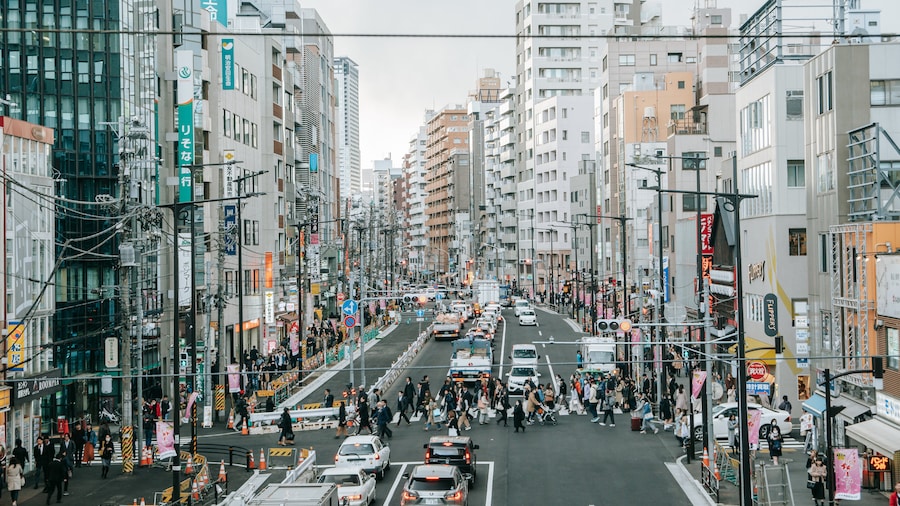
Nakameguro
Trendy Canalside Charm
18 of 19
Why go?
Stylish neighborhood with a picturesque canal, boutique shops, and cozy cafes—perfect for a relaxed day out. Cherry blossoms in spring make it a must-visit for photographers and couples.
This fashionable area blends urban sophistication with natural beauty. The Meguro River, lined with cherry trees, is the centerpiece, especially stunning during sakura season. Independent boutiques and curated vintage stores offer unique finds, while cafes and izakayas provide a mix of modern and traditional flavors. Evening visits reveal a romantic atmosphere with softly lit streets and reflections on the water. It's a quieter alternative to Tokyo's busier districts, ideal for unwinding and exploring at your own pace.
Cost
Entry: free
Time needed
2–3 hours
When to go
Spring or early evening
Nearby transit
Nakameguro Station
Insider tip
Visit during cherry blossom season for the iconic sakura views, but arrive early to avoid crowds.
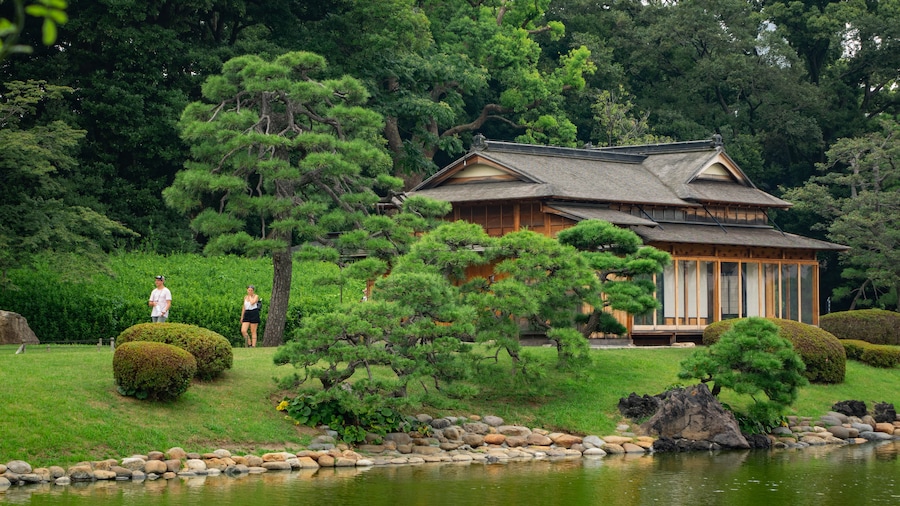
Hamarikyu Gardens
Tranquil Edo-Era Oasis
19 of 19
Why go?
Historic Edo-era garden with tidal ponds, teahouses, and seasonal blooms—an escape from Tokyo’s urban pace. Perfect for quiet walks and scenic photography.
This meticulously preserved garden offers a glimpse into Japan’s Edo period, with its tidal ponds fed by Tokyo Bay and traditional teahouses serving matcha. Seasonal flowers like plum blossoms and cherry trees add vibrant color throughout the year. The contrast between the lush greenery and surrounding skyscrapers creates a striking visual. Paths are well-maintained, making it accessible for all ages. It’s a peaceful retreat for those seeking a slower pace amidst Tokyo’s energy.
Cost
Entry: from ¥300
Time needed
60–90 min
When to go
Spring mornings
Nearby transit
Shiodome Station
Insider tip
Visit the teahouse for matcha and sweets while enjoying views of the pond.
